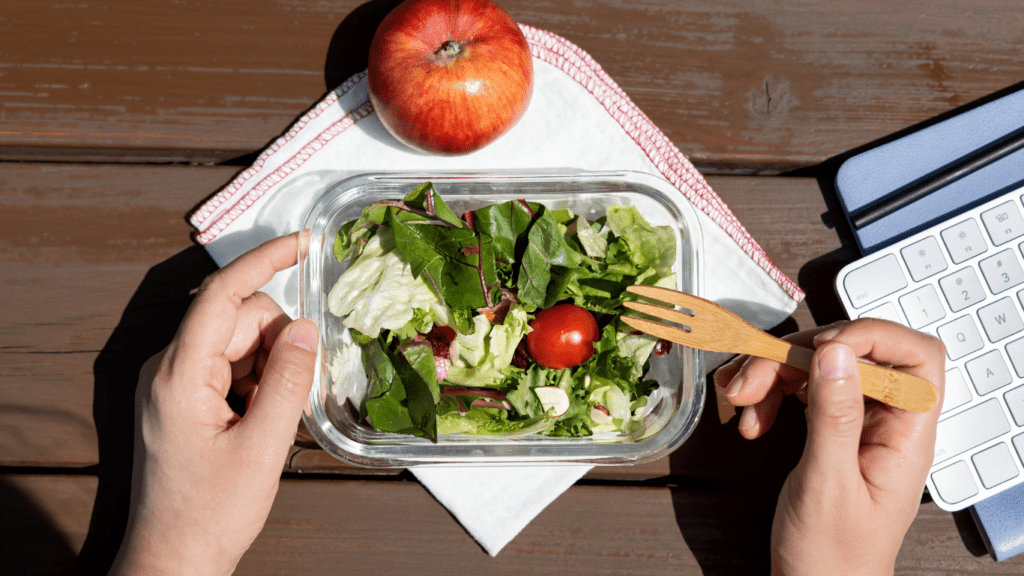Navigating portion sizes can be a crucial aspect of maintaining a balanced diet for individuals of all ages. Whether you’re a parent ensuring your child gets the right nutrients or an adult aiming for a healthier lifestyle, understanding the appropriate portion sizes for different age groups is key. As I delve into the nuances of portion control, I’ll provide insights tailored to various life stages, helping you make informed choices for you and your family’s well-being.
From toddlers to seniors, each age group has unique nutritional needs, making it essential to grasp how portion sizes play a vital role in overall health. In this article, I’ll break down the recommended serving sizes for children, teenagers, adults, and seniors, offering practical tips to help you strike the right balance on your plate. Join me on this journey to demystify portion sizes and empower yourself with the knowledge to make healthier food choices for every stage of life.
Importance of Portion Control
Portion control is crucial for maintaining a healthy diet tailored to various age groups. Understanding the significance of portion sizes is key in meeting the distinct nutritional requirements of children, teenagers, adults, and seniors. By grasping the essentials of portion control, individuals can make informed decisions about their dietary intake, promoting overall well-being at every life stage.
Why It Matters across Different Age Groups
Proper portion control is essential for individuals of all ages as it directly impacts their health and nutritional balance. Children require adequate portions to support their growth and development, while teenagers need controlled servings to maintain energy levels and promote healthy habits. For adults, portion control plays a vital role in weight management and preventing chronic conditions. Seniors benefit from portion control to ensure they meet their nutritional needs without excess, supporting overall health and vitality throughout aging.
The Impact of Overeating and Undereating
Both overeating and undereating can have detrimental effects on health across age groups. Overeating can lead to weight gain, digestive issues, and an increased risk of chronic diseases such as obesity, diabetes, and heart conditions. Conversely, inadequate portion sizes from undereating can result in nutrient deficiencies, fatigue, weakened immunity, and other health complications. Balancing portion sizes is critical to prevent these adverse effects and maintain optimal health and well-being.
Understanding Portion Sizes for Infants and Toddlers
Feeding babies requires careful attention to portion sizes to ensure they receive adequate nutrition for healthy growth and development. As a parent, I understand the importance of offering the right amount of food to support their needs at this crucial stage. Here are some tips to help you navigate this important aspect of caring for your little one:
Tips for Feeding Babies
- Start Slow: When introducing solid foods to your baby, begin with small portions to gauge their acceptance and tolerance. Gradually increase the amounts as they show readiness for more.
- Focus on Nutrient-Dense Foods: Offer nutrient-rich options like pureed fruits, vegetables, and iron-fortified cereals to ensure they receive essential vitamins and minerals.
- Listen to Their Cues: Pay attention to your baby’s hunger and fullness cues to prevent overfeeding. Allow them to eat at their own pace and avoid forcing them to finish a meal.
- Avoid Added Sugars and Salt: Minimize the use of added sugars and salt in your baby’s diet, as their developing organs are sensitive to excess amounts of these ingredients.
- Stay Hydrated: Offer small sips of water between feedings to keep your baby hydrated, especially when introducing solid foods that may increase their need for fluids.
Ideal Portion Sizes for Toddlers
Toddlers rely on proper portion sizes to meet their nutritional requirements while adapting to a more varied diet. As a caregiver, I know the significance of offering suitable portions to support their active lifestyle and growth. Consider the following guidelines when preparing meals for your toddler:
- Serve Balanced Meals: Include a mix of food groups such as fruits, vegetables, whole grains, lean protein, and dairy products to provide a well-rounded meal with essential nutrients.
- Use Small Servings: Offer small portions to avoid overwhelming your toddler and allow them to ask for more if desired, promoting self-regulation and mindful eating habits.
- Encourage Independence: Allow your toddler to explore different foods and feed themselves to enhance their motor skills and autonomy during mealtimes.
- Limit Processed Foods: Minimize the consumption of processed snacks and meals high in added sugars, sodium, and unhealthy fats to promote healthy eating habits.
- Follow Serving Size Recommendations: Refer to serving size guidelines for toddlers to ensure you are offering appropriate amounts of food from each food group based on their age and level of activity.
Portion Control for School-Aged Children
As parents or caregivers, it’s crucial to understand the significance of portion control for school-aged children. Proper portion sizes play a vital role in ensuring they receive the right balance of nutrients needed for their growth and development.
The Role of Portions in Childhood Obesity Prevention
In school-aged children, portion control plays a critical role in preventing childhood obesity. By serving appropriate portion sizes, we can help children maintain a healthy weight and reduce the risk of obesity-related health issues. It’s essential to be mindful of portion sizes to prevent overeating and promote a balanced diet.
How to Establish Healthy Eating Habits
To establish healthy eating habits in school-aged children, I focus on providing balanced meals that include a variety of nutrient-rich foods. I ensure that portion sizes are suitable for their age and activity level to support their growth and energy needs. By offering a mix of fruits, vegetables, whole grains, lean proteins, and dairy products in appropriate portions, I help instill good eating habits that can last a lifetime.
Navigating Portion Sizes for Teenagers
During puberty, teenagers experience rapid growth and changes in their bodies, making it crucial to meet their nutritional needs effectively. Ensuring teenagers have balanced meals with appropriate portion sizes is key to supporting their development and overall health.
Meeting Nutritional Needs During Puberty
As teenagers go through puberty, their bodies require increased amounts of nutrients to support growth spurts and hormonal changes. It’s essential to provide teenagers with nutrient-dense foods that supply the necessary vitamins, minerals, and macronutrients. Encouraging the consumption of lean proteins, whole grains, fruits, vegetables, and healthy fats can help teenagers meet their nutritional requirements during this critical stage of development.
Strategies to Avoid Teen Overeating
Teenagers are prone to overeating, especially with easy access to large portion sizes and unhealthy snacks. To prevent overeating, it’s important to educate them on mindful eating practices. Encouraging teenagers to listen to their body’s hunger and fullness cues, eating slowly, and avoiding distractions while eating can help promote healthier eating habits. Additionally, emphasizing the importance of portion control and choosing nutrient-rich foods over empty calories can support teenagers in maintaining a balanced diet and preventing overeating.
Portion Guidelines for Adults
As an adult, I understand the importance of maintaining appropriate portion sizes to support my overall health. Here are some key considerations to help guide you through portion control as an adult:
Adjusting Portions for Active vs Sedentary Lifestyles
When evaluating your portion sizes as an adult, it’s crucial to take into account your activity level. For individuals with active lifestyles, like myself, who engage in regular exercise or physical work, slightly larger portions may be necessary to fuel their energy needs. On the other hand, for those with sedentary routines, such as desk jobs or limited physical activity, smaller portion sizes are recommended to avoid excess calorie intake and maintain a healthy weight.
Managing Portion Sizes in Older Adults
As I plan for my future as an older adult, managing portion sizes becomes even more critical. With age, our metabolism slows down, and our nutritional requirements may change. It’s essential to adjust portion sizes accordingly, focusing on nutrient-dense foods to meet our changing needs. Older adults like me should pay attention to portion control to prevent overeating, maintain a healthy weight, and support overall well-being as we age.



